The first decade of the 20th century marked the definitive breakthrough for a French artist who played a major role in the development of modern art.
Henri Matisse (1869-1954) developed a very colorful style as the leading figure of Les Fauves or “Wild Beasts” but later adjusted his style following extended travels abroad.
One of the most fascinating paintings he ever produced was completed during this experimental transition period.
In this article, you’ll discover some of the most interesting facts about The Conversation by Henri Matisse, one of the bluest paintings in history.
1. The painting was completed at the end of the Fauvism movement
Nobody would have guessed that Henri Matisse, the son of a wealthy grain merchant, could become one of the most influential painters of the early 20th century.
He studied law in Paris and only started painting in 1889 when he was thirty years old. His mother had bought him some supplies for this purpose when he was bedridden from appendicitis.
He instantly loved painting and decided to try his luck as a professional painter. This didn’t go well initially until he discovered Impressionist paintings, a style he quickly adopted.
Unable to find his true artistic purpose, he started experimenting with colors at the turn of the century.
The next years defined his career as he became one of the leaders of Les Fauves, an art movement that only lasted a couple of years in the first decade of the 20th century.
He completed The Conversation between 1908 and 1912, a time that marked another transition period in Matisse’s career.
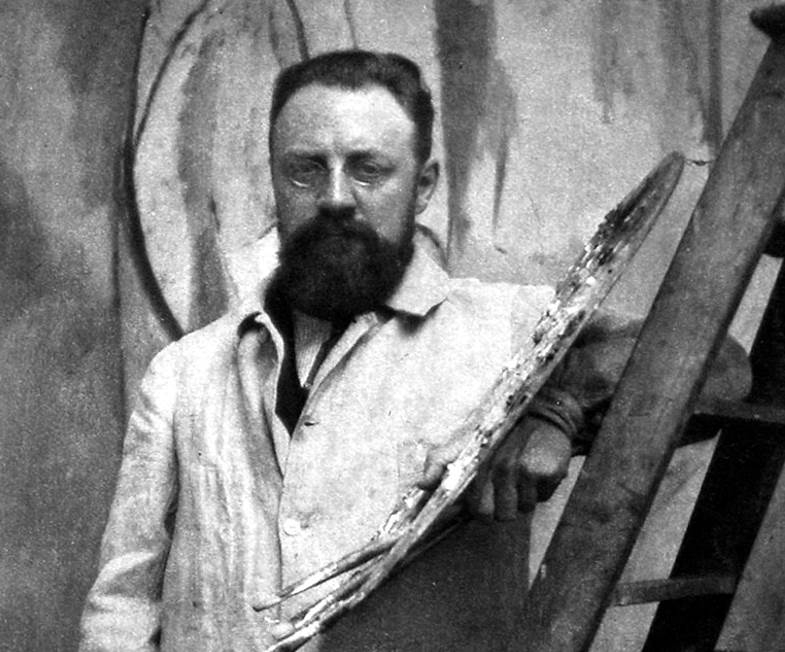
2. It depicts the artist who is having a conversation with his wife Amélie
Fauvism paintings are characterized by vivid and unnatural colors. That’s why few contemporary art critics could appreciate this revolutionary new style.
It was a great experiment and it paved the way for other modern artists, but Matisse changed his style after a couple of exhibitions.
This painting depicts the artist on the left wearing striped pajamas and his wife, Amélie Noellie Parayre (1872-1958), is sitting on a chair.
Remarkably, the striped pajamas look comical today but were actually very fashionable in France at the time.
These stylish clothes were imported from India where tea planters wore them. Matisse often wore them to paint in his studio.
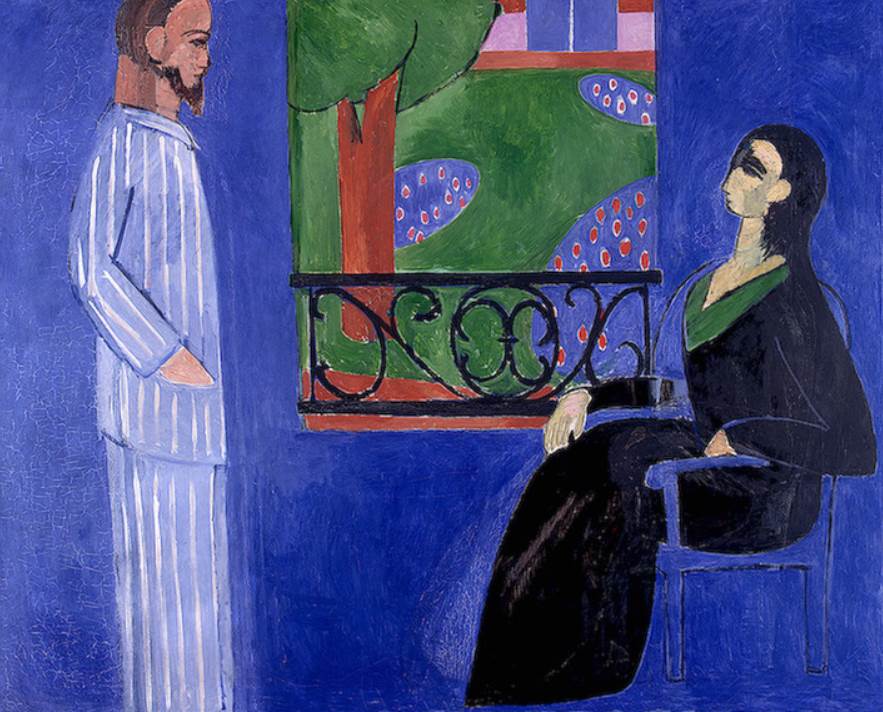
3. The painting emphasizes the troubled relationship between Henri and Amélie
The marriage between Henri and Amélie lasted for 41 years. They married in 1899 but Amélie filed for divorce in 1939.
She suspected her husband had an affair with a Russian model named Lydia Delectorskaya (1910-1998) and that was the end of their troubled marriage.
The problems didn’t start then, though, because the couple really started off on the wrong foot. Matisse told Amélie that he would never love her as much as he loved painting.
The distant conversation between the couple in this work might reflect problems between the two. This is certainly the case in a portrait he made of his wife titled “The Green Stripe” or “Portrait of Madame Matisse” (1905).
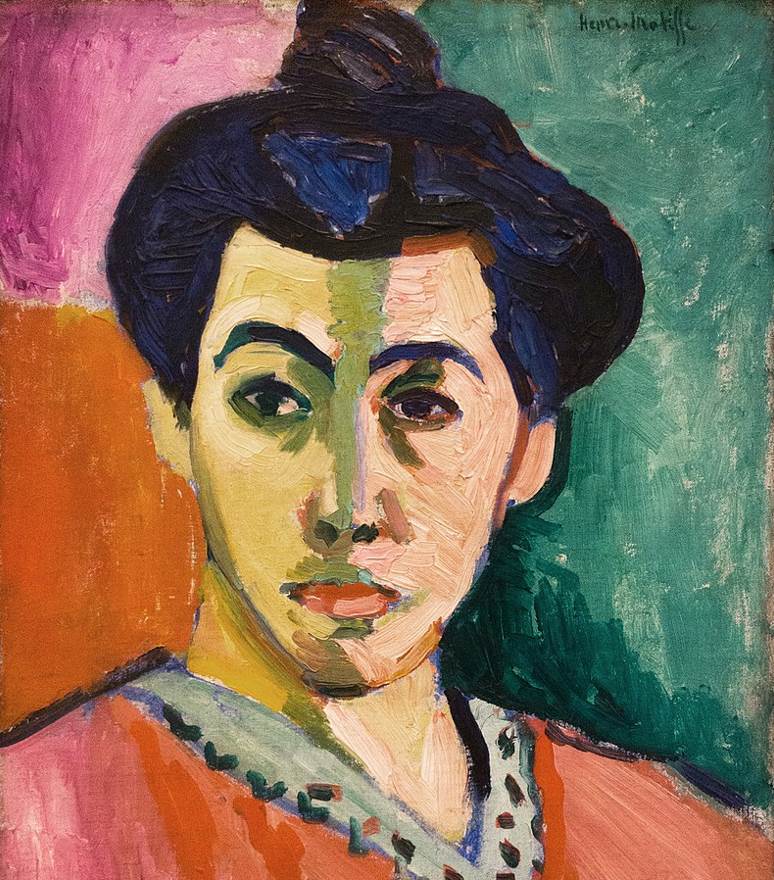
4. The intense blue background marked a clear departure from Fauvism
The Conversation is one of the paintings in which he returned to natural colors. He didn’t include the distortion that characterized the paintings he exhibited at the Fauvism exhibitions.
This chair has the same color as the wall in the background. There’s also a window and what appears to be a balcony that overlooks a garden.
He experimented with this pattern during this period of his career. He completed his famous red painting titled “The Red Studio” (1911) which features multiple elements that blend into the background.
These paintings were produced following extended trips abroad. He traveled to North Africa and also studied Islamic art in Munich. The result was paintings that feature profound natural colors such as this one.
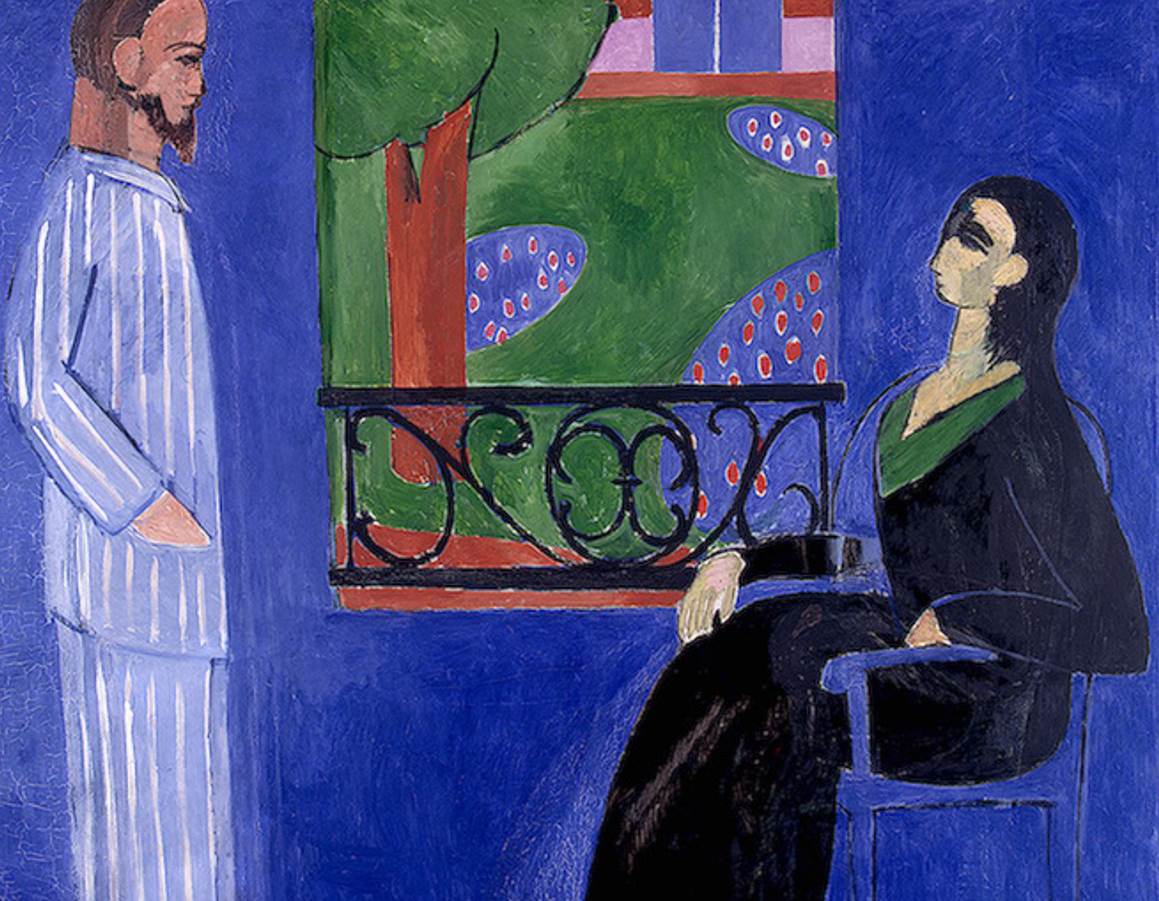
5. The painting was purchased by a Russian art collector
The career of Henri Matisse didn’t really take off during the first years of the 20th century. He didn’t sell a lot of paintings and the criticism he received really hit him hard.
This all changed when he met a Russian art patron named Sergei Shchukin (1854-1936). He was a rich businessman who developed a taste for Impressionism and Post-Impressionism.
By the time he met Matisse, he already owned several paintings by Claude Monet, Pierre-Auguste Renoir, Paul Cézanne, and Vincent van Gogh.
Shchukin’s patronage finally allowed Matisse to provide for his family, a breakthrough he desperately needed at the time.

6. The Russian art patron commissioned one of Matisse’s most famous works
Some of the most important commissions from the Russian art collector was a double commission for paintings titled “Music” and “Dance.”
Both paintings were completed in 1910 and are considered to be some of the most important artworks of the early 20th century.
Dance was actually the second version. he already created another painting a year earlier in 1909, a painting that is part of the collection of the MoMA in New York City.
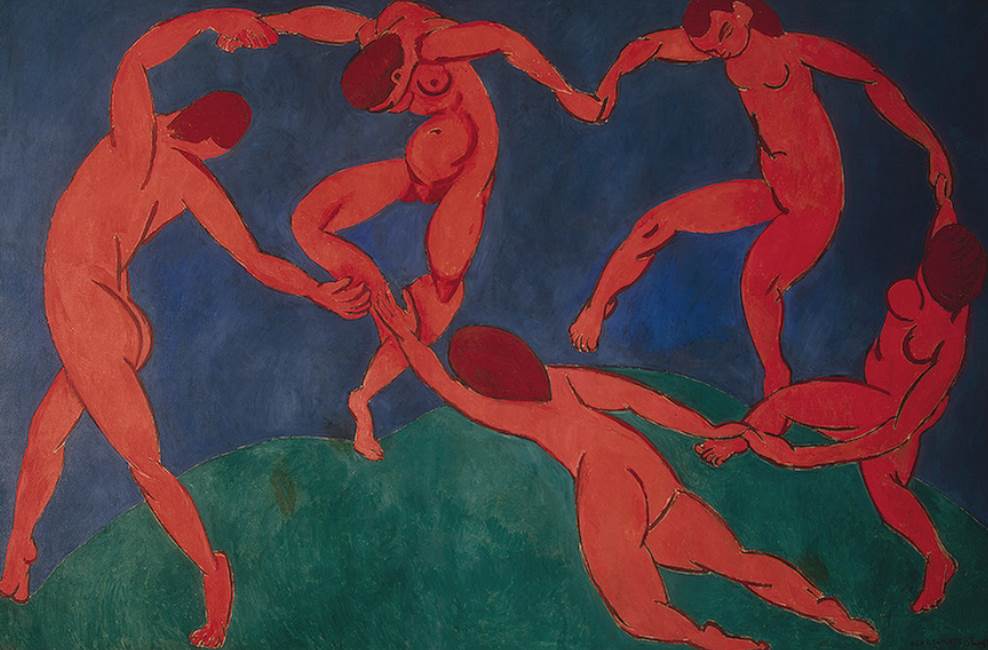
7. How big is The Conversation by Henri Matisse?
Both Dance and Music are monumental paintings that were commissioned to decorate the huge walls of Shchukin’s mansion.
The Conversation is a fairly large work as well. This oil on canvas painting has dimensions of 177 × 217 centimeters (69.62 × 85.37 inches).
8. Where is the painting located today?
Sergei Shchukin wasn’t able to enjoy his art collection for too long because it was confiscated during the Russian Revolution of 1917.
The rich Russian managed to flee to Paris in 1936 and lived for the rest of his life relatively comfortably in the French capital. His collection was first housed in his former mansion in Moscow and called the State Museum of New Western Art.
Stalin didn’t like this place and had it closed in 1948. The collection was transferred to other museums in Russia, including the Pushkin Museum of Fine Arts in Moscow and the State Hermitage Museum in Saint Petersburg.
If you want to admire Matisse’s masterpieces (Dance and Music are also here), then you can visit the Winter Palace in Saint Petersburg which houses the equally impressive Hermitage Museum.



